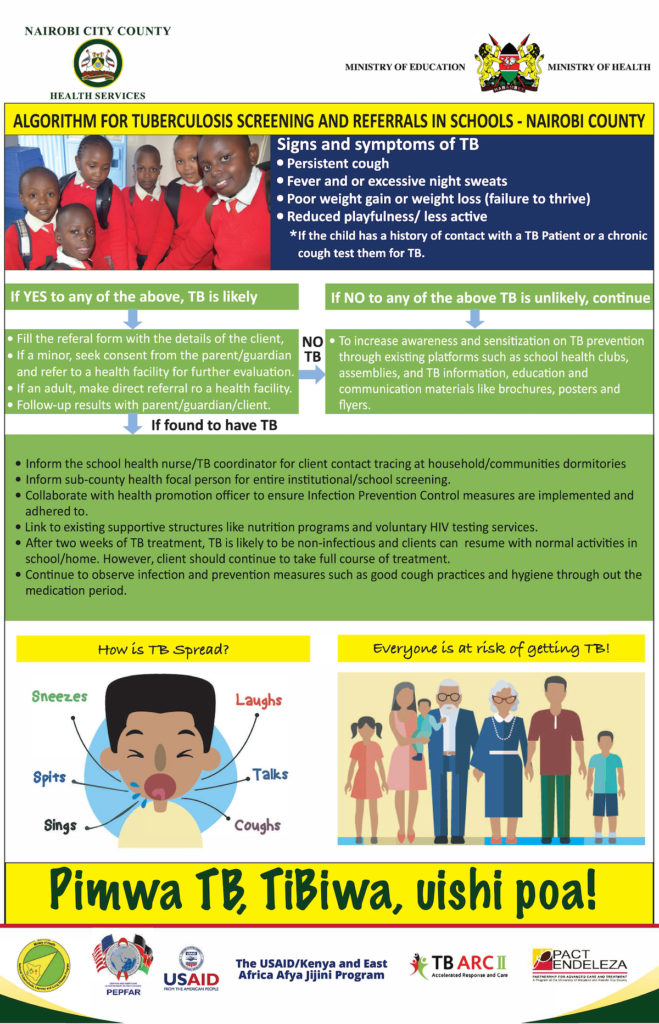Addressing Tuberculosis Burdens in Kenyan Schools
Nairobi City County in Kenya observed a rise in tuberculosis (TB) cases among school-aged children over the past three years, reaching approximately 25% of the TB burden for the county.
Nairobi City County in Kenya observed a rise in tuberculosis (TB) cases among school-aged children over the past three years, reaching approximately 25% of the TB burden for the county. Health authorities decided that more needed to be done, and launched a campaign to increase screening and treatment of TB among schoolchildren and raise awareness of the issue.
Ciheb in Kenya has been working with the county under the Partnership for Advanced Care and Treatment (PACT) Endeleza, a PEPFAR program funded through the US Centers for Disease Control and Prevention. PACT Endeleza (which means “improving further” in Swahili) has been supporting the Nairobi City County in providing integrated HIV and TB prevention, care, and treatment services across 48 primary health care facilities.
As the increasing TB burden became known, Ciheb in Kenya worked with the county to create an easy-to-use algorithm that teachers, school staff, and the children themselves could use to help determine if TB symptoms were present and, if so, identified steps to be taken. A poster distributed to schools that illustrates the algorithm appears below.
The TB algorithm was officially launched in schools during the World Tuberculosis Day festivities that were held in Nairobi on March 13 (before COVID-19 impacted the country and restrictions were put in place).
In other TB initiatives, Ciheb in Kenya has been supporting the Kenya Medical Research Institute‘s TB laboratory in providing diagnostic tests for Kenya Ministry of Health facilities through the PEPFAR-funded Technical Assistance for Public Health Impact in Kenya (TAPHIK) project. In addition to building TB and HIV laboratory capacity and quality assurance, biosafety, and infection control practices, TAPHIK is collaborating in an ongoing impact study with KEMRI in Kisumu County.
The 2016-2020 impact study is seeking to compare the average rates of decline in TB case notification rates across sub-county areas. It is also assessing the association between interventions that should prevent TB cases and trends in TB case notification rates, as well as other factors. The results will be published in 2021.
